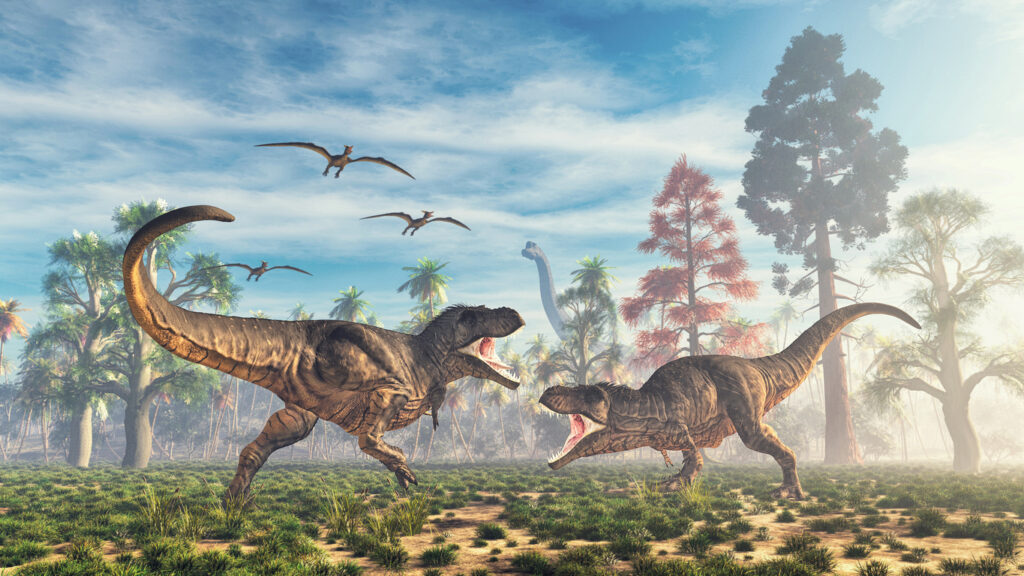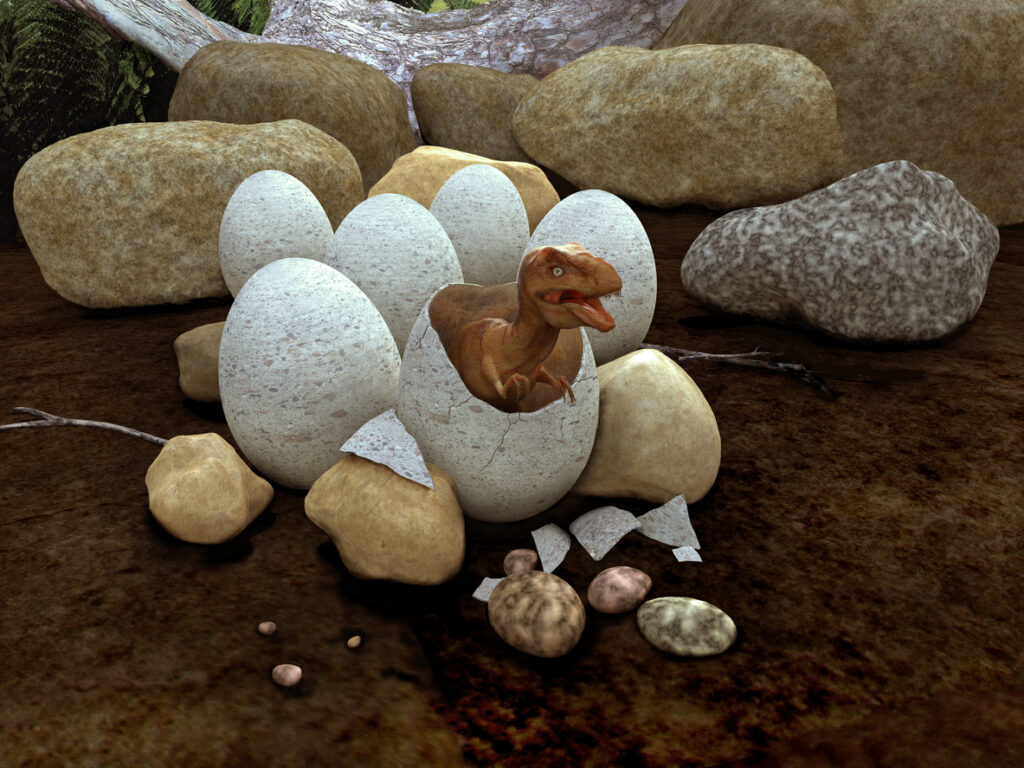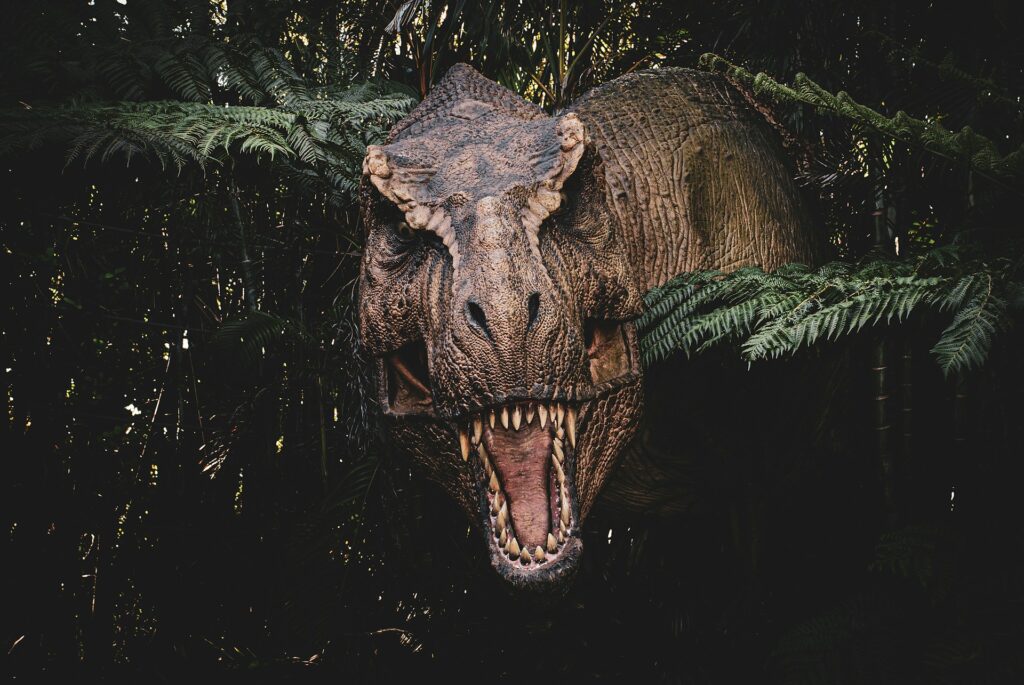
Dinosaurs may have ruled the planet millions of years ago, but their legacy isn’t just buried in museums and movie soundtracks. As researchers dig deeper into how these creatures thrived for so long—and in so many extreme environments—they’re discovering that dinosaur biology and behaviour might still hold answers for some of today’s biggest scientific challenges. From climate resilience to engineering design, here’s how dinosaur survival traits are finding their way into the modern world.
1. Bone structure that inspires lightweight engineering
Dinosaur bones were strong but surprisingly light, thanks to internal air pockets and a honeycomb-like structure. This adaptation helped massive creatures like sauropods support their own weight without collapsing under it.
Today, engineers are borrowing this design for use in aircraft, prosthetics, and even architecture. The idea is simple: make materials strong where they need to be, but remove excess weight wherever possible. Nature figured it out first—we’re just catching up.
2. Thermal regulation from plates and feathers
Stegosaurus had massive plates that might’ve helped regulate body temperature, while many theropods developed early feathers not for flight, but for keeping warm or cool depending on the climate.
Modern researchers are using these clues to design better temperature-control systems in everything from clothing to urban infrastructure. Materials that mimic feather-like insulation or surface area cooling are already showing promise in energy-efficient buildings.

3. Eggshell composition that’s influencing bio-materials
Dinosaur eggshells were both strong and porous, striking the right balance between protecting the embryo and allowing gas exchange. Their microscopic structures are now being studied by scientists developing biodegradable packaging and medical scaffolding materials. The structure of these shells may even help in designing protective coatings that are tough yet breathable—something modern materials science is always trying to perfect.
4. Beak mechanics for improving modern tools
Some dinosaurs evolved beaks that were adapted to crush, slice, or strip vegetation with precision. These beaks were lighter than jaws with teeth but still incredibly effective, shaped by millions of years of fine-tuning through diet and environment.
This has inspired tool designers and robotic engineers to explore how flexible but strong beak-like shapes can be used in grips, cutters, and even surgical tools that need to be both lightweight and efficient.
5. Tail balance mechanics used in robotics
Dinosaur tails weren’t just for show—they played a key role in balance and movement. Raptors like Deinonychus used their tails like counterweights to stay agile while running or making sharp turns.
That same logic is now being used in robotics, where dynamic tails or weight distribution systems help robots stay balanced while navigating uneven terrain or performing quick movements. It’s one of the clearest examples of biomimicry in action.
6. Skin texture as inspiration for solar panels
Some dinosaurs had pebbly, textured skin that could’ve played a role in moisture retention or heat deflection. While not much attention was given to this in the past, new modelling suggests that certain skin patterns might have helped manage exposure to the sun or regulate body temperature.
Now, engineers are experimenting with similar textures to reduce heat on surfaces like solar panels or building exteriors—maximising efficiency without adding energy costs.

7. Jaw pressure and bite efficiency in mechanical design
Dinosaurs like Tyrannosaurus rex had some of the most powerful bites in history. Their jaw structure allowed them to crush bone with surprising efficiency, without compromising their skull integrity. This has caught the attention of industrial designers working on mechanical jaws, clamping tools, and hydraulic systems—especially in areas where pressure distribution matters, like demolition equipment or prosthetic limb grips.
8. Footprint studies improving mobility aids
Fossilised trackways reveal how dinosaurs distributed their weight, adjusted their gait on different terrain, and even worked around injuries. These insights are helping researchers refine mobility devices for humans and animals alike. Everything from better hiking boot soles to smarter walking aids for rehabilitation is being shaped—literally—by studying how massive animals stayed mobile without modern tech or cushioned trainers.
9. Nesting behaviour influencing urban planning
Many dinosaurs were surprisingly attentive parents, building nests and choosing ideal environments to protect their young. These choices were often linked to flood avoidance, temperature control, and predator management. Urban planners and environmental designers are studying these ancient nesting behaviours to design resilient, low-impact housing in climate-vulnerable areas—especially when it comes to flood management and sustainable land use.
10. Respiratory system models informing human medicine
Birds, which evolved from theropod dinosaurs, have an incredibly efficient respiratory system involving air sacs that allow a constant flow of oxygen. Fossils show that their dinosaur ancestors likely had a similar system—far more advanced than the lungs of mammals.
This is now inspiring research into artificial respiration, including ventilator design and treatments for respiratory disorders. By understanding how these systems evolved, scientists are getting ideas for how to help modern lungs do more with less effort.
11. Dinosaur growth rates guiding cancer and regeneration research
Some dinosaurs grew at incredible speeds, reaching full size within a few years. Scientists are exploring the genetic drivers behind this rapid development to better understand cell growth—particularly what regulates it safely and efficiently.
This research could have major implications for cancer treatment and tissue regeneration. If we can pinpoint how dinosaur cells grew so fast without spiralling into uncontrolled growth, we might unlock new ways to control or repair our own tissue.
12. Survival after extinction-level events shaping climate resilience
While most dinosaurs didn’t survive the asteroid impact, some of their evolutionary cousins—birds—did. What set them apart might’ve been diet flexibility, body size, nesting behaviour, or even metabolism.
These traits are now being studied to understand how life adapts to extreme change—knowledge that could prove essential in facing modern climate crises. What helped creatures survive the worst mass extinction in history could hold lessons for what’s coming next.